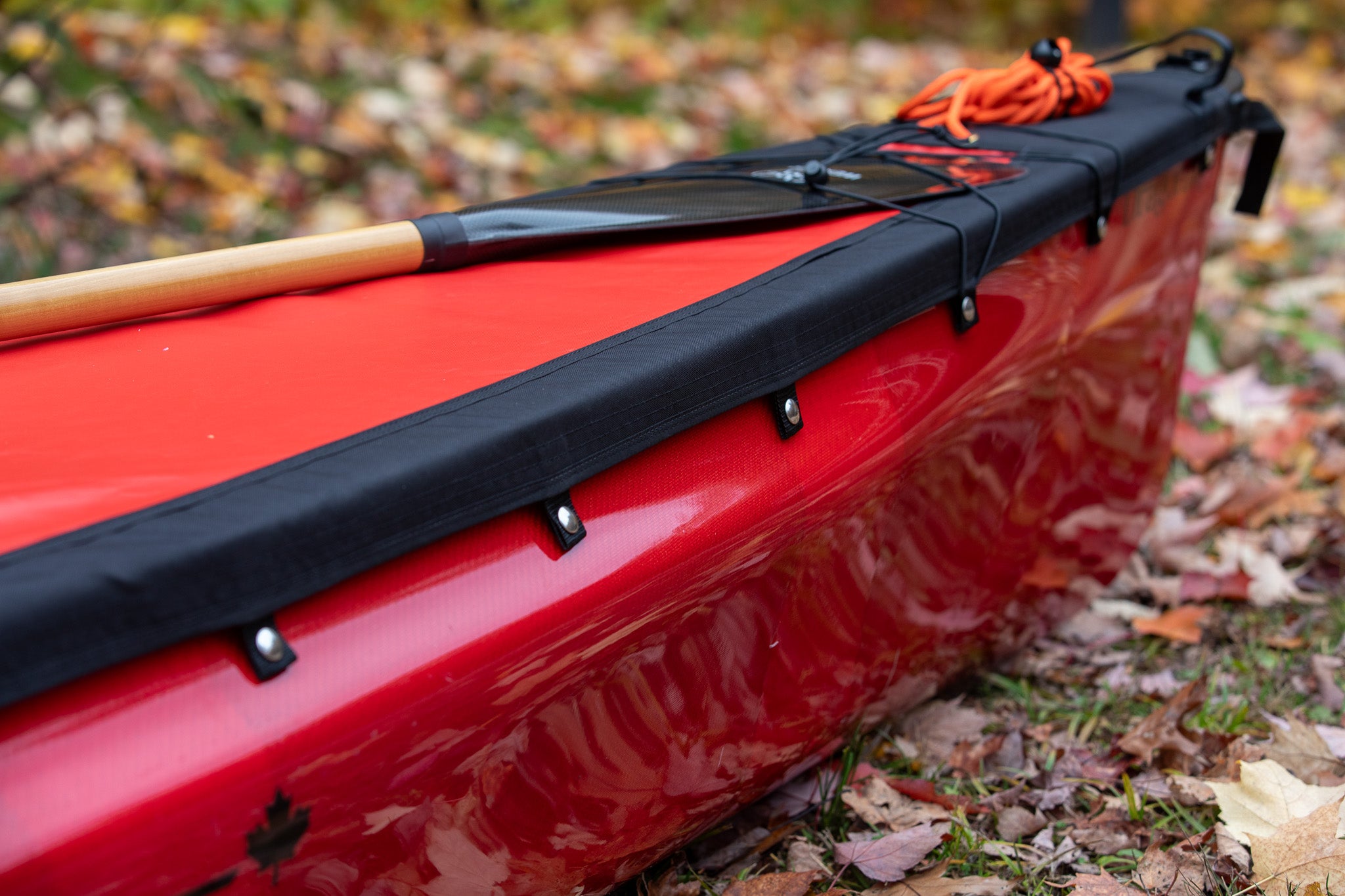We know your story: You have a beautiful new boat (or maybe an old, much loved and trusted canoe). You'd like to take it on an exciting adventure and want to get a spray deck for it . . . but you've discovered that most canoe spray decks require that you drill holes in your boat, either for riveted snap studs or lacing loops.
First, we have to say that drilling holes in your boat is, indeed, intimidating, but it's also easy to do and isn't something you need to be afraid of or nervous about.
Second, if you want a solution that doesn't require drilling into your favorite boat, we have one for you!
YKK makes an adhesive-backed snap stud called a SNAD. The front side is either a metal snap stud attached to a clear vinyl disk or a domed black plastic snap stud. On the back is a piece of 3M Very High Bond (VHB) adhesive that's activated by removing the protective film from the adhesive surface. The SNAD studs are made to be used in harsh environments and are used every day to secure tarps and covers on RVs, sail and motor yachts, and off road vehicles.
The YKK SNAD studs let you mount the exact same spray cover without needing to drill into your boat.
We've found that they work very well most of the time. We have them on many our personal and family canoes. We are meticulous about prepping the boat surface, removing all waxes, coatings, and contaminants, and following the "set up time" instructions from YKK. Our boats were also either new or had been carefully stored with UV protection, so the surface of the hull was clean, undamaged, and unoxidized.
However, they aren't perfect and can come off.
We've seen SNAD installations fail on some customers' boats, most commonly on Royalex or T-Formex hulls that have been treated with UV protectant sprays or are sun damaged and oxidized. If you have a Royalex or T-Formex boat, we recommend the drilled and riveted snaps for the best durability and longevity.
They also don't adhere well to highly curved surfaces. They don't work well on standard snap attachment decks where the hull under the gunwales is inset and highly curved, like the Swift Dragonfly, Northstar Polaris, Northstar Phoenix, etc. If the space under your canoe's gunwales looks like the photo at the top of this post, we recommend either drilling and riveting a standard snap attachment deck or considering a hybrid snap-and-lace attachment deck that secures further down on the hull where there is less curvature.
A great test for this is to place a quarter on the hull where the snaps will go - if you can rock the quarter back and forth or see light underneath it, there is too much curvature for a SNAD. If it sits securely, flat against the hull, your boat should be a great candidate for a SNAD install.
We've also seen SNADs come off when a boat scrapes up against rocks or trees while paddling. That can pop a SNAD off the hull, but the repair is very easy: you just grab a spare SNAD and alcohol wipe from your repair kit, clean the spot you want to put it, and stick it on the boat. When a riveted snap is torn off the boat by scraping up against a rock, it's usually rips the rivet out and leaves a small hole behind, requiring much more extensive repair and specialized tools.
Personally, we find that one or two SNADs come off of our family boats each season and we simply replace them, then replenish the supply of spares in our repair kit.
So, what do we recommend for you?
If you want a quick and easy no-drill installation, have a composite boat that's in good condition, and your install location passes the quarter test, we'd suggest the SNAD snap studs. We'll send a few extras so that if one comes off you have a spare to replace it.
If you want the most durable and permanent installation, don't mind drilling holes in your boat, paddle in really hot places, fail the quarter test, or have an oxidized composite boat or a Royalex or T-Formex boat, we recommend the stainless snaps and rivets.



